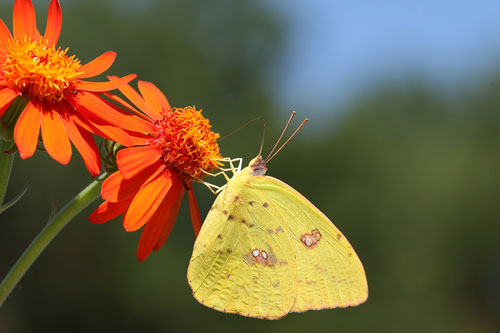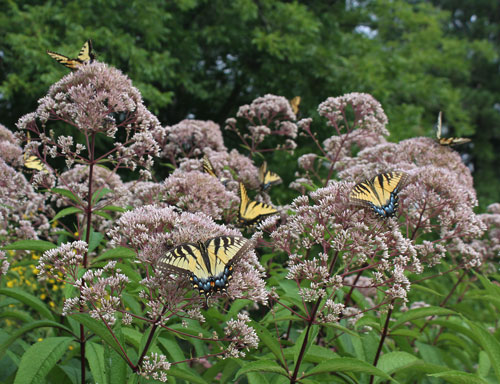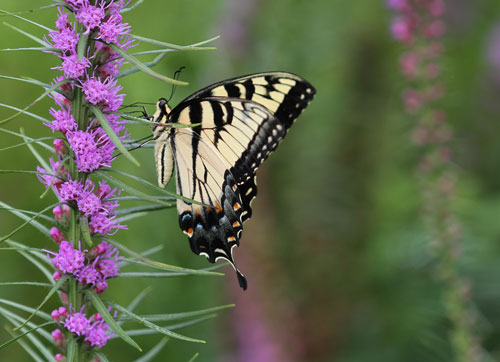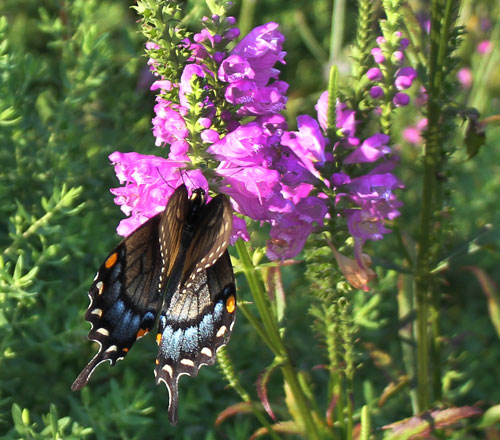The Year of the Butterfly?
go.ncsu.edu/readext?241310
en Español / em Português
El inglés es el idioma de control de esta página. En la medida en que haya algún conflicto entre la traducción al inglés y la traducción, el inglés prevalece.
Al hacer clic en el enlace de traducción se activa un servicio de traducción gratuito para convertir la página al español. Al igual que con cualquier traducción por Internet, la conversión no es sensible al contexto y puede que no traduzca el texto en su significado original. NC State Extension no garantiza la exactitud del texto traducido. Por favor, tenga en cuenta que algunas aplicaciones y/o servicios pueden no funcionar como se espera cuando se traducen.
Português
Inglês é o idioma de controle desta página. Na medida que haja algum conflito entre o texto original em Inglês e a tradução, o Inglês prevalece.
Ao clicar no link de tradução, um serviço gratuito de tradução será ativado para converter a página para o Português. Como em qualquer tradução pela internet, a conversão não é sensivel ao contexto e pode não ocorrer a tradução para o significado orginal. O serviço de Extensão da Carolina do Norte (NC State Extension) não garante a exatidão do texto traduzido. Por favor, observe que algumas funções ou serviços podem não funcionar como esperado após a tradução.
English
English is the controlling language of this page. To the extent there is any conflict between the English text and the translation, English controls.
Clicking on the translation link activates a free translation service to convert the page to Spanish. As with any Internet translation, the conversion is not context-sensitive and may not translate the text to its original meaning. NC State Extension does not guarantee the accuracy of the translated text. Please note that some applications and/or services may not function as expected when translated.
Collapse ▲ Photos by Debbie Roos, North Carolina Cooperative Extension
(all photos taken at Cooperative Extension’s Pollinator Paradise Garden in Pittsboro)
Have you noticed that this seems to be the “Year of the Butterfly”? Well, actually that depends on which butterfly species we are talking about, but more on that below. The eastern tiger swallowtail (Papilio glaucus) has seemingly been everywhere this summer and I have enjoyed watching them in my demonstration pollinator garden at Chatham Mills in Pittsboro. It has not been uncommon to see dozens of them nectaring at a time on a clump of ironweed or joe-pye weed (photo above).
The eastern tiger swallowtail is one of the most common and recognizable North Carolina butterflies and is found in all 100 counties. The North Carolina General Assembly designated the eastern tiger swallowtail as North Carolina’s official state butterfly in 2012. All male tiger swallowtails are the familiar yellow and black tiger-striped, but females can be yellow or black (black form females are often mistaken for other dark swallowtails which are different species). They have at least two broods per year, possibly three. Caterpillars feed on shrubs and trees including tulip poplar and black cherry. Unlike the black swallowtail caterpillars which are commonly seen by gardeners because they feed on parsley, dill, fennel, and other umbelliferous garden plants, most people never see eastern tiger swallowtail caterpillars because they feed high up in the tree canopy. However, if you are observant you may notice their frass (poop) accumulating under host trees during the late spring and summer!
Adult tiger swallowtails nectar on a variety of plants including joe-pye weed, ironweed, and milkweeds. The eastern tiger swallowtail overwinters in North Carolina as a chrysalis.
The abundance of butterflies has provided ample photo opportunities. When I recently shared some of my photos on Facebook others commented that they were also seeing more butterflies than usual, so I thought I would see if I could find out why.
I started out by talking with Dr. Harry LeGrand, zoologist with the North Carolina Natural Heritage Program and one of North Carolina’s top butterfly experts. LeGrand is the author of Butterflies of North Carolina, a comprehensive on-line butterfly atlas. LeGrand agreed that the populations of eastern tiger swallowtail were more abundant this year. The population “explosion” coincided with the emergence of the second brood (generation). Cool, wet weather from March to May meant that most butterfly species got a later start than usual because they did not get enough heat units to develop. The tiger swallowtail and a few other species were not held back like most others and LeGrand said it is impossible to know why. According to LeGrand, most of the other 175 butterfly species in North Carolina are experiencing lower than normal numbers this year, especially back in the spring and early summer.

Populations of most North Carolina butterfly species were down this year, including the giant cloudless sulphur
I also talked with Dr. John Dole, the head of the Horticultural Sciences Department at North Carolina State University. Many people don’t realize that in addition to being our state floriculture specialist, Dole is also a renowned butterfly expert and has co-authored a book called Butterflies of Oklahoma, Kansas, and North Texas.
Dole explained that a complex interaction of three main factors affect caterpillar mortality: parasites (e.g., parasitic wasps and flies), predators, and diseases. The increased humidity from the wetter than normal weather last spring meant that some insect-parasitic fungi, bacteria, and viruses that attack caterpillars and pupae (e.g., Beauveria, Pseudomonas, etc.) thrived. We don’t know exactly what causes a certain species of butterfly to be more numerous in any given year but it’s related to one of these factors. The exception is the migratory monarch, which faces other challenges in addition to predators, parasites, and diseases. Monarch populations are way down this year across much of the country, and this likely has much to do with habitat loss both in their overwintering range in the Mexico mountains as well as in the U.S., along with many other factors.

Monarch on blazing star – unlike the eastern tiger swallowtail, monarch populations are way down this year
Dr. Clyde Sorenson, North Carolina State University Professor of Entomology, is another one of our state butterfly experts. Sorenson concurred that there are just too many variables that we don’t understand to be able to give a reason for annual fluctuations in the butterfly populations. Many butterfly species experience these population eruptions but because tiger swallowtails are so big and conspicuous and familiar, we tend to notice them more.
So, is it the Year of the Butterfly? It may be the Year of the Eastern Tiger Swallowtail but in general butterfly populations were down across the state this year, especially early in the season. Who knows what next year will bring.
So now that you’ve noticed the tiger swallowtails, be on the lookout for other species that may have previously escaped your attention! Enhance butterfly habitat in your garden by providing host plants for caterpillars and nectar plants for adults. Check out these resources below to enhance your butterfly knowledge.
Butterfly Resources:
- Butterflies of North Carolina
- Carolina Butterfly Society
- CarolinaLeps Listserv
- Butterflies and Moths of North America
- Pollinator Paradise Demonstration Garden – North Carolina Cooperative Extension
- Butterflies in your Backyard – North Carolina State University
- Attracting Butterflies – North Carolina State University
- Pollinator Web Resources – North Carolina Cooperative Extension
- Butterfly Conservation Initiative
- Monarch Watch






